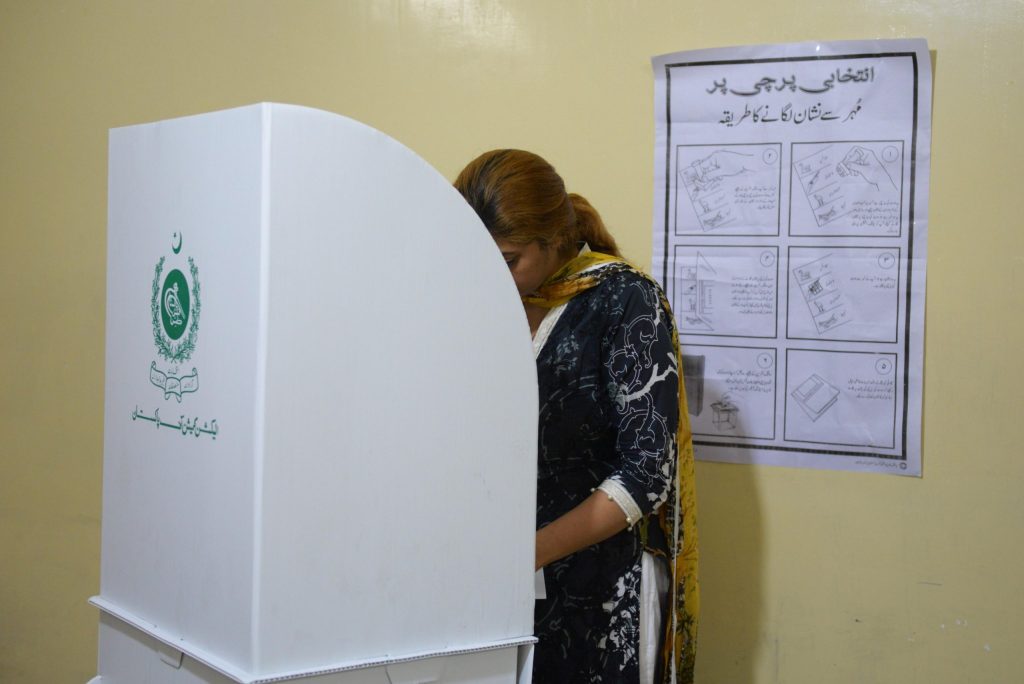In 2021, Pakistan’s then Prime Minister Imran Khan announced the introduction of electronic voting machines in the next general election. That announcement was met with no small amount of resistance from opposition parties who, after a vote of no-confidence, ousted the PM and reversed the decision.
Here’s the story of Pakistan’s short-lived experiment with e-voting and what we can learn from it.
2021 – Electronic voting machines introduced
After being elected in 2018, Pakistan Tehreek-e-Insaf’s (Pakistan Movement for Justice) or PTI, promised to address issues of distrust that had long plagued Pakistani politics. Three years into their five year term, those promises came packaged in the form of a controversial bill with a massive slew of amendments to the 2017 Election Act.
Not only would it formalise the introduction of Electronic Voting Machines (EVMs), but also extend voting rights to Pakistanis living overseas for the first time, via an online voting system – something which had been in demand and debate for a long time.
Despite Khan and his party’s assurance that the move was to counter vote-rigging and corruption, a broad spectrum of opposition parties insisted that it was merely to use it for just that.
The bill passed and the ruling party further committed to ensuring that the machines were made locally.
The National University for Science and Technology, Comsats and National Institute of Engineering — three establishments operating under the Ministry of Science and Technology – were commissioned and Pakistan’s very own voting machine was born.
The Prime Minister presented the new machine to government officials, legislators and members of the Pakistani Electoral Commission (ECP) which had previously rejected the use of EVMs and had listed 37 separate reservations in doing so.
Nevertheless, the machines were there, production was starting and apparently, everything was working.
2022 – Electronic voting machines abandoned
But apparently, that distrust was too much. While it wasn’t exclusively down to the introduction of voting machines, in 2022 Imran Khan’s government faced a vote of no confidence, led by a cross-section of 11 Pakistani opposition parties, many of whom had been longtime rivals, ultimately leading to Khan and the PTI’s ouster.
The new government rapidly passed the Election Amendments Bill, which reversed the introduction of EVMs and sent things largely back to the way they were.
The upcoming ‘2023’ election, currently set to take place on February 8, 2024, will be paper only and Pakistanis living abroad will once more be unable to participate.
So what happened? Was e-voting a casualty of Pakistani politics, or were there mistakes made that could have been avoided?
Perhaps a little of both.
Fast is Slow
Firstly it should be made clear that there is not complete opposition to e-voting in Pakistan. Nor is there complete opposition from bodies that opposed the introduction such as the Electoral Commission.
Chief Election Commissioner Sikandar Sultan Raja insisted that technology could be used to improve the election process, but that any system must be tested and free of loopholes.
Reservations such as security vulnerabilities, non-transparent development processes, unrealistic resource and manufacturing requirements, large-scale training requirements and inbuilt violations to voter privacy were all raised and all dismissed by the PTI.
Then Science and Technology Minister Shibli Faraz insisted that after the implementation of amendments, the ECP would have no choice but to obey the law and that other parties should prepare technical experts to examine the machines themselves.
Such a blunt forceful approach to the implementation of electronic voting has obviously proved unsuccessful in this instance. It also stands in stark contrast to more successful implementations elsewhere.
In Estonia for example, the introduction of electronic voting has been a decades long trust building exercise that remains imperfect. In more politically tumultuous environments it is bound to be subject to even more scrutiny.
For some, who may already distrust established government institutions, such as the ECP, irrespective of independence, a more technical option might be an improvement. For others it might seem an obvious attempt to undermine electoral integrity.
The truth – ie, whether a party’s motivations for introducing voting machines are honest or not – is only part of the equation. Perception alone plays an enormous role.
Slow is Fast
In addition to the fundamental issue of trust – already challenging in an ordinary political environment – there are numerous other considerations that have to be made in order to improve the chances of successful implementation.
Stakeholder and expert consultation, time and resource availability, education, accessibility, security, as well as outright legal and political challenge – almost all of which were underestimated, underappreciated or just ignored in this particular instance.
Unfortunately, none of them are easy.
Pakistan’s brief foray into e-voting may have been with the right intentions. But what it represents in retrospect is a lesson that when it comes to significant high level electoral innovation, change can not be forced.
With the next election only a couple of months away, Imran Khan has been barred from holding political office, the national assembly has been dissolved under advice from the current PM and former PM Nawaz Sharif has returned from self-imposed exile.
However recent polls show the PTI still has a solid lead – meaning the Pakistani experiment with voting machines might not be entirely over.
